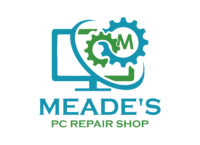
Photo by Freepik
In today’s diverse professional environment, the ability of IT professionals to convey complex technical information in a way that resonates with non-technical stakeholders is invaluable. This necessity spans across various interactions, from formal presentations to casual discussions. The key to success lies in adapting the communication style to suit the understanding of those who have different technical backgrounds.
Understand Your Audience
Every effective communication strategy begins with a thorough understanding of the audience’s background. Recognizing their level of technical knowledge helps to formulate explanations that are simple enough and simple. This tailored approach ensures that your message is relevant, engaging, and, most importantly, comprehensible to non-technical listeners. Identifying the interests of the stakeholders can also guide the emphasis of your discussions, focusing on aspects of the technology that directly impact their work or solve specific problems they face.
Clarify Complex Terminology
When discussing technical subjects, it’s essential to curb the use of jargon and acronyms that can alienate or confuse non-technical stakeholders. If technical terms are necessary, they should be clearly explained using straightforward language. This practice not only demystifies IT concepts but also builds an inclusive dialogue that fosters better understanding and cooperation. By translating complex terms into everyday language, you bridge the gap between different areas of expertise and facilitate more effective collaboration.
Employ Everyday Analogies
Relating technical concepts to common experiences can make them more accessible. By drawing analogies between complex IT processes and everyday tasks or objects, you create a relatable understanding for non-technical stakeholders. This method helps illuminate the relevance of technical work in the broader context of business operations and personal impact. Analogies serve as powerful tools that decode intricate information into digestible and memorable pieces.
Utilize Visuals
Visual aids like charts, graphs, and diagrams play a crucial role in simplifying complex data or processes. These tools offer a visual narrative that can be easier to understand than verbal explanations alone. By presenting information graphically, you cater to visual learners and provide a reference that stakeholders can revisit. Visual representations can highlight trends, illustrate relationships, and summarize large data sets in a clear and impactful way.
Tell Compelling Stories
Framing your technical achievements as stories with a clear narrative structure — a beginning, middle, and end — can captivate and engage your audience more effectively than mere factual reporting. This storytelling approach allows you to highlight the challenges faced, the solutions implemented, and the results achieved in a way that resonates on a human level. Stories are not only easier to follow but also more likely to be remembered and retold, amplifying the perceived value of your work.
Highlight Impactful Metrics
When it comes to illustrating the success of IT initiatives, focusing on key performance indicators (KPIs) and metrics relevant to business goals is essential. Choose metrics that resonate with the interests of non-technical stakeholders, such as cost savings, efficiency improvements, or customer satisfaction increases. By linking IT outcomes to these universally appreciated metrics, you demonstrate the tangible benefits of technical projects and reinforce the strategic importance of your role.
Seek Questions, Answer Thoughtfully
Encouraging inquiries from non-technical stakeholders is vital to demystifying complex concepts. Demonstrating genuine engagement through attentive listening shows respect for their concerns and promotes a supportive dialogue. Providing clear, well-considered responses helps translate intricate details into understandable terms. This not only clarifies confusion but also strengthens mutual trust and facilitates effective communication. Ultimately, such an approach empowers stakeholders, fostering a more inclusive and informed decision-making process.
For IT professionals, mastering the art of communicating complex information in an accessible manner is not just a skill — it’s an essential part of career development. By implementing these strategies, you can ensure that your technical insights are not only shared but also valued across your organization.



Recent Comments